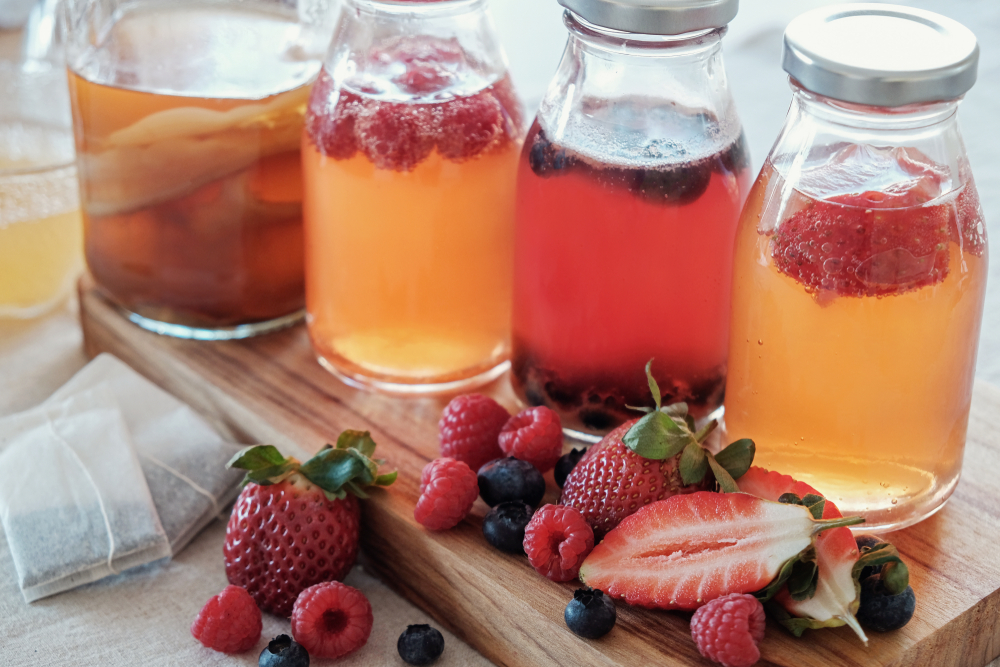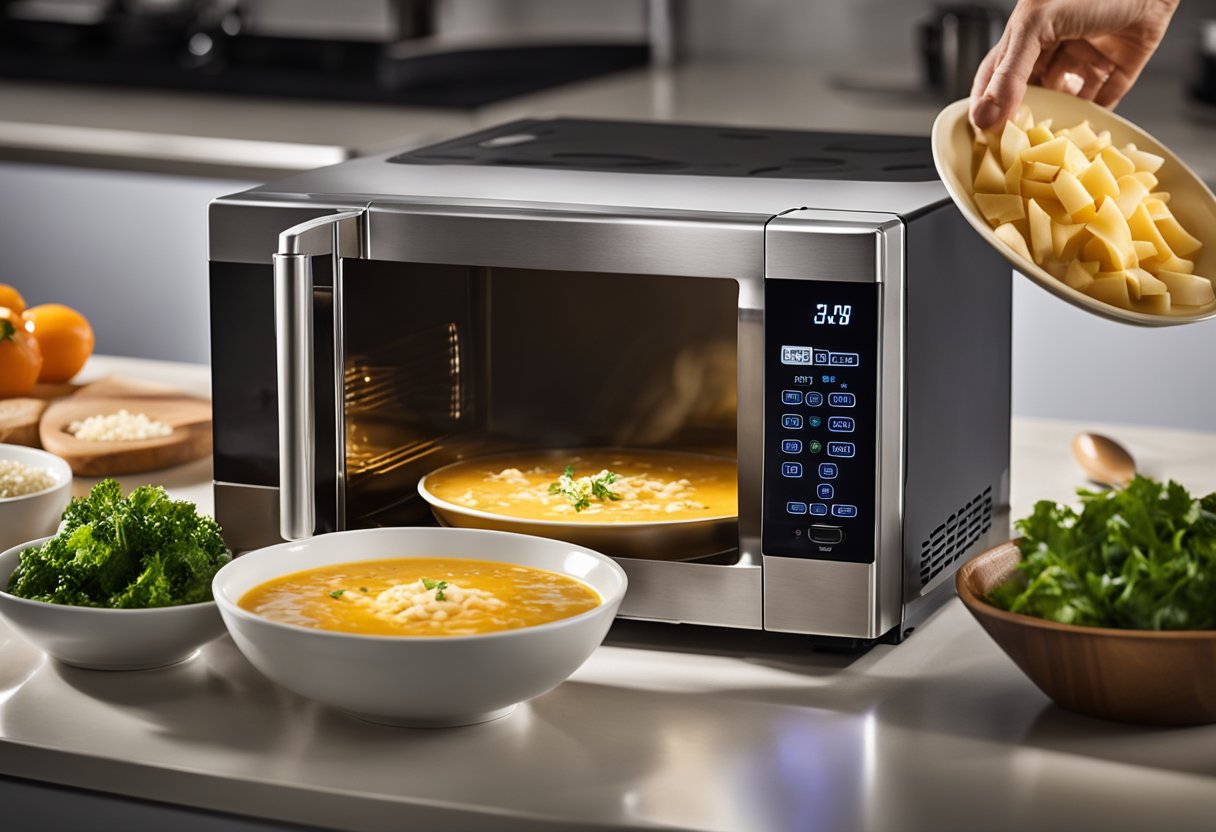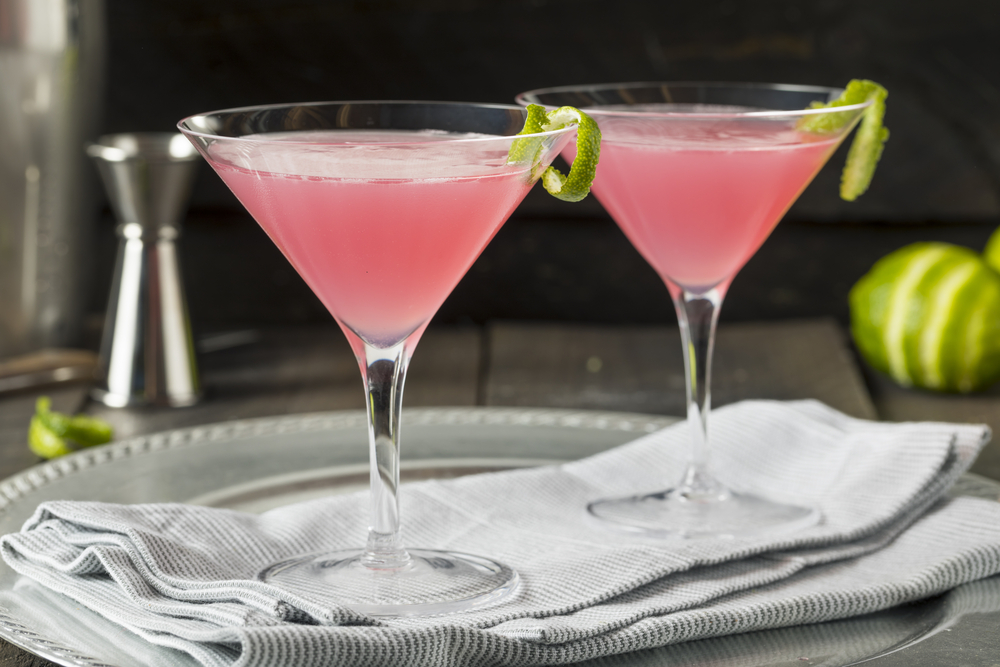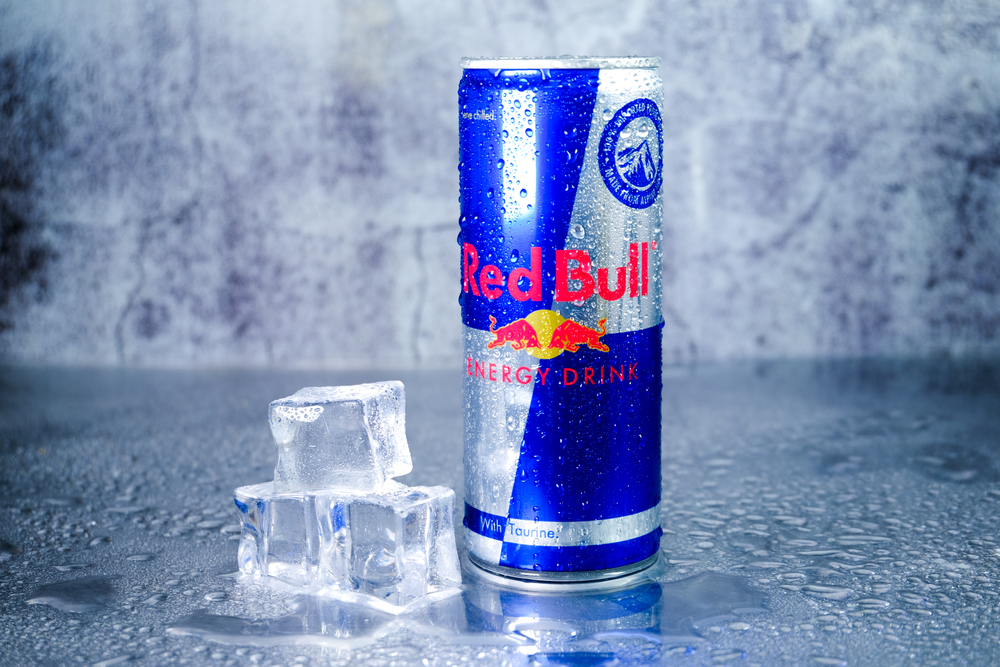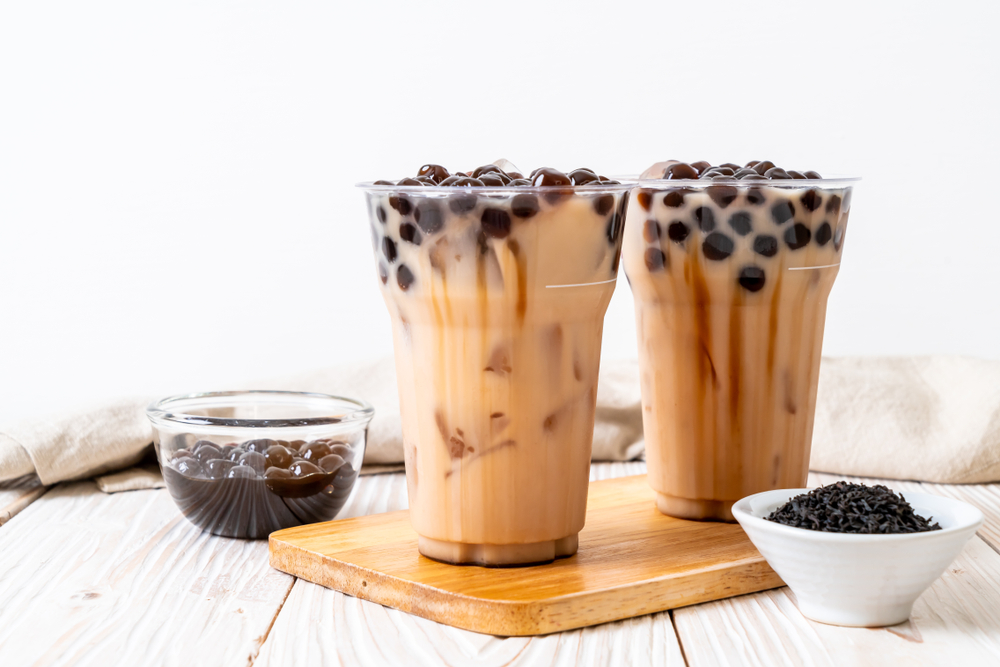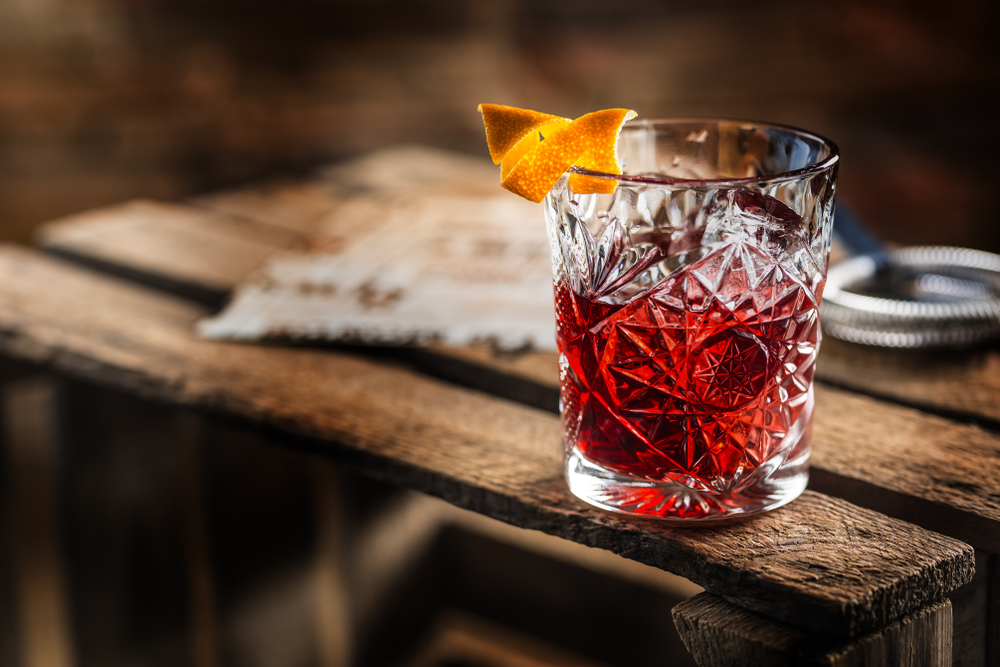Kombucha has grown a lot in popularity in recent years but was relatively obscure in the west until recently. There are a lot of facts about the drink that aren’t yet common knowledge, including how to measure sugar in kombucha.
The measurement requires the use of a refractometer. With this, a small drop of the liquid can be easily analyzed for sugar content. Sounds technical, but it’s actually a simple process!
As this article progresses we’ll be getting into the nitty-gritty of how these refractometers work. Plus we’ll give you some extra insight into kombucha and how much sugar you should expect it to have.
General Sugar Content In Kombucha
It’s been said that there’s no such thing as a sugar-free kombucha. That’s because sugar is actually seen as a necessary step in the brewing process.
Notably, a lot of sugar is actually absorbed by the SCOBY. If you’re new to all this, SCOBY stands for Symbiotic Culture Of Bacteria and Yeast. That’s the stuff that’s floating around in kombucha tea and it actually consumes much of the sugar.
That sugar, therefore, ferments out and so only a fraction of it actually gets to the consumer. Every brewer of Kombucha will put a fair bit of sugar in there, from one source or the other. Some use honey or fruit juice.
Is Store-Bought Kombucha Artificially Sweetened?
Store-bought kombucha, of course, will simply use regular sugar by and large. And while much of it ferments, not all of it will. Generally, they make sure to add in enough of the stuff that it will still sweeten the tea.
That’s great if you want a sweetened tea that is still healthier than average. But it can be a bit much for some people. Some kombucha contains as much as 20 grams of sugar per bottle!
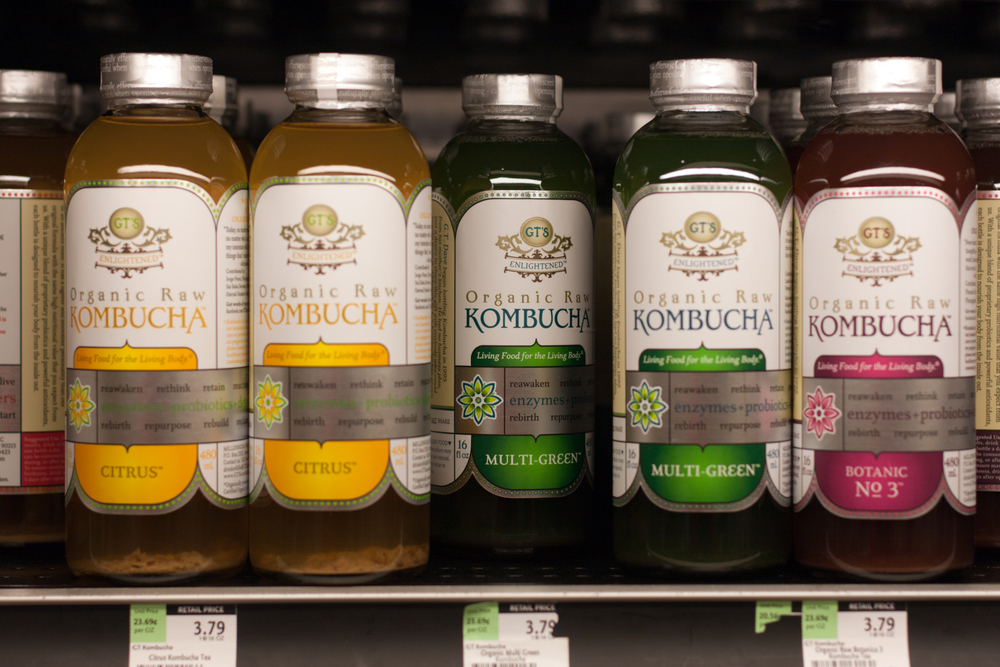
That is a lot of artificial flavoring for something that sells itself primarily on being a healthy alternative. But of course, the amount of sugar in kombucha varies wildly. Which is why it’s worth measuring how much you’ve got.
How To Measure Sugar In Kombucha
Store-bought kombucha should of course be labeled, but it can be hard to discern what that label means in this case. Does it refer to the total amount put in during the brewing process? Or to the amount of sugar left over after the SCOBY has its way with it?
For that matter, how do we even discern exactly what the remainder of sugar in the drink would even be? It’s a complicated science and not something that can be easily shown on a mass-produced product.
That means there’s only one reliable method to measure the sugar content in kombucha. That’s the use of a refractometer. This will do the job regardless of whether you have store-bought or homemade kombucha.
What Is A Refractometer?
The refractometer is a small instrument that is designed to measure the water contents of liquids. It can analyze liquids and give out a reading displaying the results.
Important note: not all refractometers are looking to gauge the same thing! You want to make sure the one you get has a Brix display. That’s the one that will help you with sugar!
It’s a well-established and lightweight device and is pretty convenient to use. It’s affordable, ranging around $20 on average, and can be bought off of Amazon.
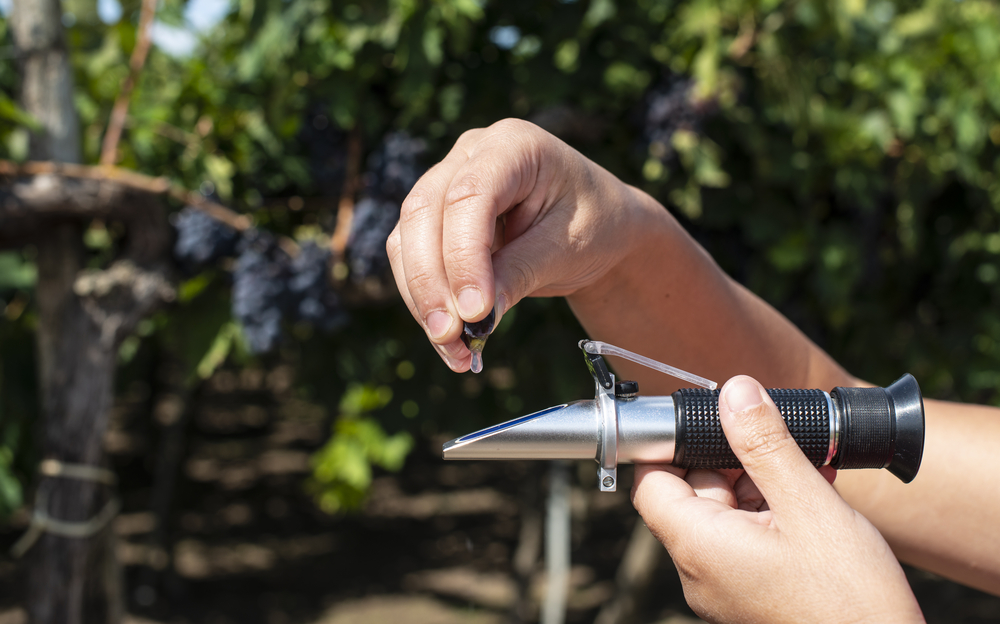
The prism of the refractometer is the most important part, that’s the small blue piece at the front. Keep it nice and clean for the best results. It can be effectively cleaned with a Q-tip. When not in use keep the lid down and store it in a dry, enclosed space.
How To Use A Refractometer
- Lift the plastic lid of the refractometer’s prism. This is at the front of the device.
- Tilt the device so that the front of it is angled slightly upwards, enough so that its slanted surface appears level. This is to ensure the liquid doesn’t run right off of the device.
- Place a small drop of the liquid – kombucha in this case – on the prism. Ideally, a pipette would be used for this.
- Close the lid to make sure the liquid stays put.
- Look into the eyepiece on the opposite side of the device. Hold the device up towards a light source while you do this to make it easier to see inside.
- Take note of the number on the blue line. If you have a Brix Refractometer as we said, that number is the amount of Brix found in the liquid.
As a general rule of thumb, 1 Brix is equal to 1 g of sugar per 100 ml of liquid. A drop of water from a pipette is generally around 0.05 ml of liquid. Using this math you should have a decent idea of how much sugar is in the kombucha as a whole.
What Are The Risks Of Having Too Much Sugar?
Sugar is sweet and can often add a delicious burst of flavor to meals and drinks. However, it can come at a cost if you’re not careful about how much you consume. It can be fattening, but that’s just the tip of the iceberg.
Excessively sugary diets have been linked to increased risk of heart disease and type 2 diabetes! These are very severe concerns. But the main thing that scares people about sugar is how hard it is to avoid it!
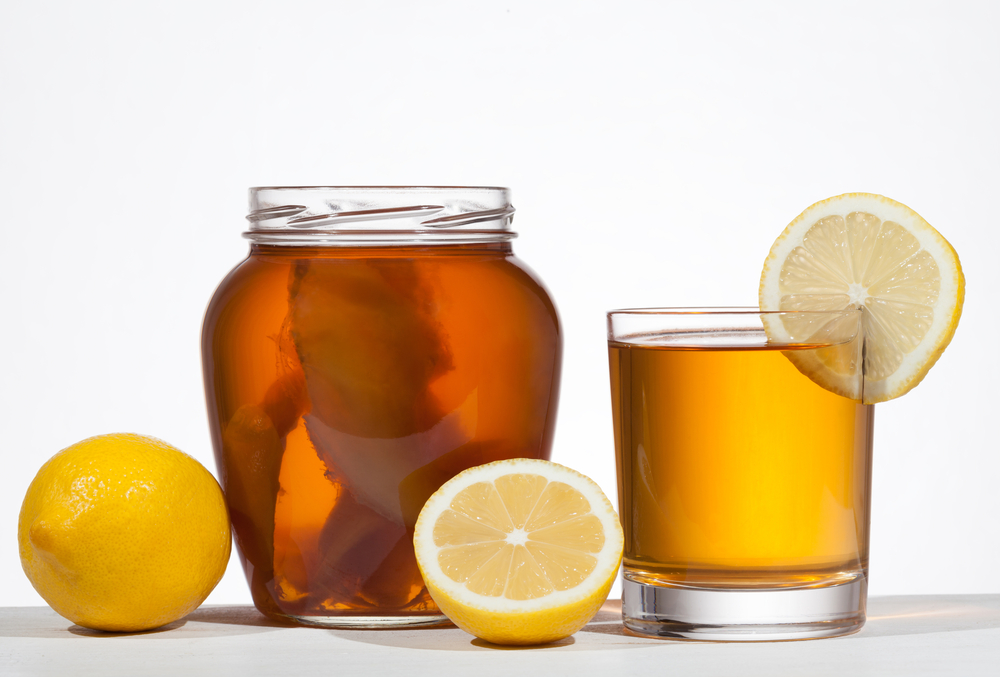
Sugar is extremely popular and widely used. In the US, practically everything seems to have some level of sugar in it unless it’s explicitly stated otherwise. It can really sneak up on you, as it does with kombucha for a lot of people.
Being health-conscious means being aware of everything you put into your body. Many people will consume things and pay little mind to their content. And if they want to live their lives that way, that’s perfectly fine.
But some are more cautious about what they take in each day, and there’s certainly nothing wrong with that. There are a lot of devices and apps out there that can help simplify this for you, as this article just goes to show.
What Does Kombucha Taste Like?
Did you just recently find out about this drink and come here looking for health facts before trying it? Curious as to what it might taste like?
Kombucha is much like sweet tea after being carbonated, but its flavor can vary depending on what’s added to it. Its light fizziness is typically accompanied by an acidic, tart, and fruity taste.
It’s also got some texture to it, which is an important thing to note. Similar to orange juice with some remaining pulp in that regard.
Keep in mind that it comes in a variety of styles that alter the flavor.
Where Does Kombucha Come From?
There’s a lot of mystery about the exact origins of kombucha. But it’s believed to have originated in China, where it’s considered a traditional beverage. It’s said to have been traded along the fabled and enduring silk road trading route.
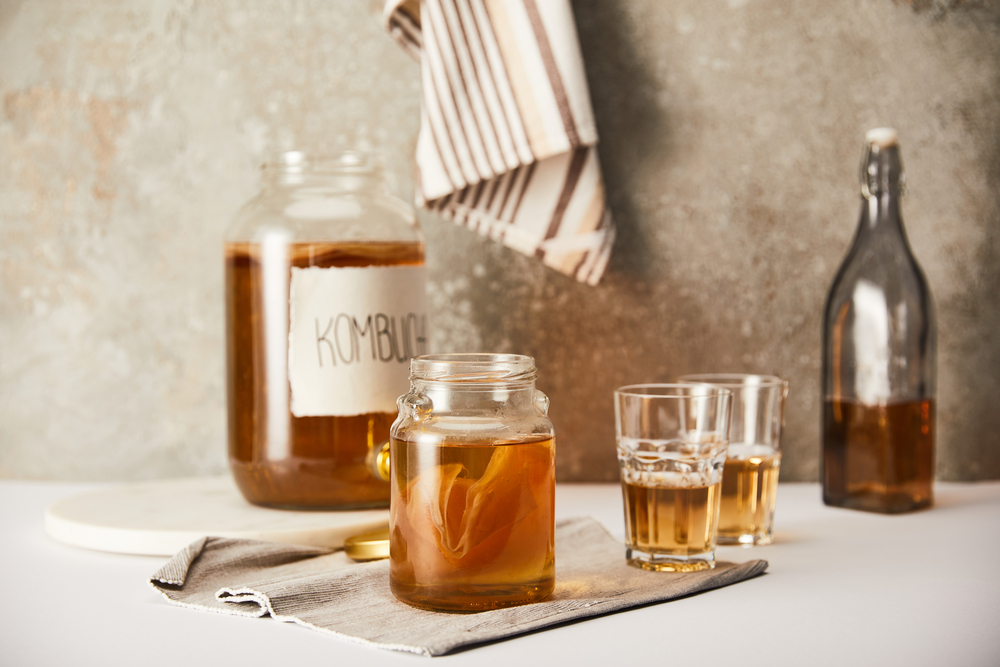
That doesn’t narrow it down too much, considering how long the silk road was active. But Forbes reports that it dates back to 220 BC, which would mean it’s been around for over 2000 years.
Reports say that a Korean physician named Dr. Kombu brought the fermented tea to Japan. The legend goes that he brought it to Emperor Inkyo himself as a curative. Kombucha is thus said to be named after Dr. Kombu.
While much of its past is steeped in ambiguity and potentially a myth, either way, kombucha stuck around. It made its way to Europe in the early 20th century and slowly but surely to the rest of the world.
Throughout its lifespan, it’s always been sold based partly on its health benefits. Recently its popularity rose greatly in the US, as more and more people have sought to be more health-conscious.
Which Kombucha Brands Are Lowest In Sugar?
As we’ve said, some levels of sugar are to be expected with this drink but some definitely have a lot more than others. The Health-Ade Kombucha seems to have the lowest amount of sugar right now at just 6 grams. That’s in a 16-fluid-ounce bottle, mind you.
The Rowdy Mermaid claims to use what they consider the bare minimum of sugar needed to help the fermentation process thrive. According to their own website, their kombucha contains a max of 9 grams of sugar per 12 fluid ounces.
In Conclusion
The idea of using a scientific device to analyze the sugar contents of liquid sounds really complicated on paper. But the refractometer makes it a pretty simple process.
With the use of this relatively cheap device, you can know for sure how much sugar content you’re getting with your kombucha. In fact, it can be used to do the same job for any other liquid you might want to test!
If you’re health-conscious and worried about sugar in your drinks, now you can rest easy. You’ll never have to wonder again!


